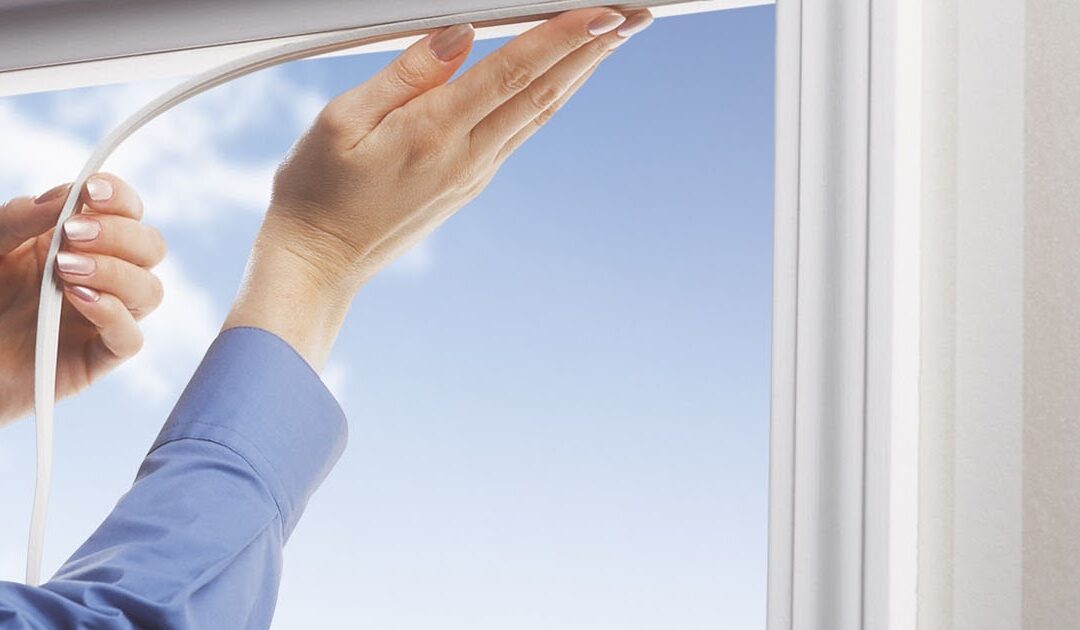Proper window sealing is a crucial aspect of window installation that often goes unnoticed. Ensuring your windows are well-sealed can significantly impact your home’s energy efficiency, comfort, and overall performance. In this blog, we’ll discuss the importance of proper window sealing during installation and provide tips for achieving an airtight seal.
Why is Window Sealing Important?
Window sealing is essential for several reasons, including energy efficiency, temperature control, moisture prevention, and noise reduction. By creating an airtight seal around your windows, you can help maintain a comfortable living environment while also protecting your home from potential issues like mold growth and drafts.
Energy Efficiency and Temperature Control
One of the primary reasons to ensure proper window sealing is energy efficiency. Windows are responsible for a significant amount of heat transfer in homes, with poorly sealed windows allowing cold air to enter and warm air to escape. This can result in increased energy consumption as your heating and cooling systems work overtime to maintain a comfortable temperature.
Properly sealed windows help reduce heat transfer, keeping your home warmer in the winter and cooler in the summer. This not only improves your home’s overall energy efficiency but can also lead to lower utility bills.
Moisture Prevention
Another critical factor in window sealing is moisture prevention. When windows aren’t properly sealed, moisture can seep into your home, leading to issues such as mold growth, wood rot, and damage to walls and flooring. Proper window sealing helps prevent these problems by keeping moisture out, ensuring your home stays dry and free from potential damage.
Noise Reduction
A well-sealed window can also help reduce noise pollution from outside sources. By creating an airtight barrier, window sealing minimizes the transmission of sound waves, resulting in a quieter and more peaceful living environment.
Tips for Achieving Proper Window Sealing
To ensure your windows are properly sealed during installation, consider the following tips:
Use Quality Materials
Selecting high-quality materials is essential for achieving a long-lasting and effective window seal. This includes choosing the right type of caulk or sealant designed specifically for windows, as well as selecting durable weatherstripping materials. Investing in quality materials can help ensure your window seal remains intact for years to come.
Install Flashing
Flashing is a critical component of window sealing that helps direct water away from the window opening. Installing flashing around your windows can help prevent moisture infiltration and protect your home from potential water damage. Be sure to follow the manufacturer’s guidelines for proper flashing installation.
Insulate the Window Frame
In addition to sealing the gap between your window and the wall, it’s also essential to insulate the window frame itself. This can be achieved using expanding foam insulation or fiberglass insulation, which should be installed between the window frame and the rough opening. Properly insulating your window frames can help further improve your home’s energy efficiency and temperature control.
Check for Gaps and Cracks
After installing your windows, it’s crucial to inspect them for any gaps or cracks that could compromise the seal. Use a flashlight to check around the window frame and look for any visible gaps where air or moisture could potentially enter. If you find any issues, address them immediately by applying additional sealant or adjusting the window as needed.
Maintaining Your Window Seals
Once your windows are properly sealed, it’s essential to perform regular maintenance to ensure they remain airtight and effective. Here are some tips for maintaining your window seals:
Inspect Your Windows Regularly
Regularly inspect your windows for signs of wear or damage, such as cracked or peeling caulk, damaged weatherstripping, or visible gaps. Address any issues promptly to maintain a proper seal.
Clean Your Windows and Seals
Keeping your windows clean can help extend the life of your window seals. Be sure to clean the glass, frames, and seals regularly using mild soap and water, and avoid using harsh chemicals that could potentially damage the sealant.
Replace Damaged Seals
If you notice that your window seals are damaged or no longer provide an airtight barrier, it’s essential to replace them promptly. This may involve re-caulking the window or replacing the weatherstripping to ensure your home stays well-insulated and protected from moisture infiltration.
In the end, proper window sealing during installation is crucial for maintaining a comfortable, energy-efficient, and moisture-free living environment. By selecting quality materials, installing flashing, insulating the window frame, and regularly inspecting and maintaining your window seals, you can help protect your home and enjoy the many benefits of well-sealed windows.

